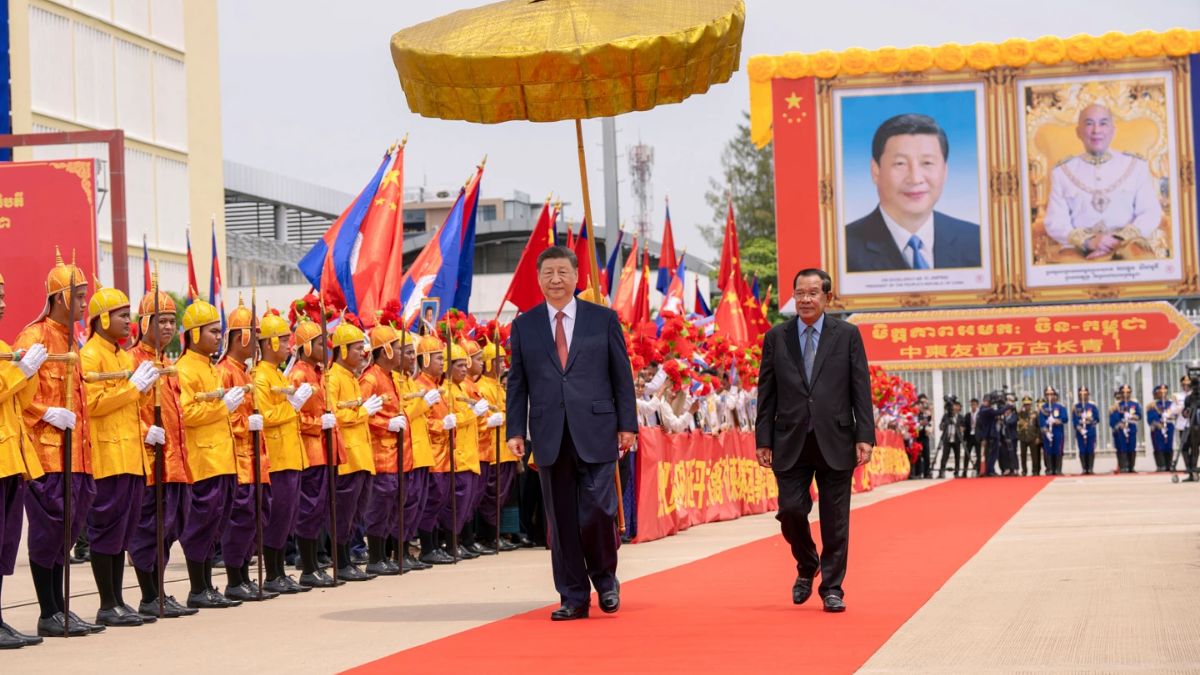While President Donald Trump strains relations with allies and trading partners through his warnings of “reciprocal” tariffs, President Xi Jinping’s tour of Southeast Asia is unfolding at a moment marked by a symbolic and painful chapter in US history — the final, humiliating American defeat to communism in the region.
On April 17, 1975, after the last Americans had evacuated, the Khmer Rouge backed by China, captured Cambodia’s capital. Exactly 50 years later, Xi landed at Phnom Penh International Airport for the closing stretch of his regional visit.
“Instead of delivering peace, the Khmer Rouge drove residents from Cambodia’s towns and cities at gunpoint, forcing them into the countryside to toil as peasants in what the regime called an agrarian utopia,” Nikkei Asia quoted Jon Swain, one of the 22 foreign journalists who, according to the French embassy, remained in the capital in 1975.
Five days earlier, US Ambassador John Gunther Dean had been airlifted out on a Marine helicopter during Operation Eagle Pull. Carrying the American flag under his arm, Dean’s departure marked a deeply humiliating exit — one the seasoned diplomat would never overcome.
Prince Sirik Matak, once Cambodia’s ambassador to China and a central figure in the US-supported removal of Prince Norodom Sihanouk by General Lon Nol in 1970, met a grim fate on April 21. Denied sanctuary at the Hotel Le Phnom, where the International Red Cross was trying to create a safe zone, he was left to die in agony.
Jinping arrived in Phnom Penh on Thursday at the end of a three-nation tour of Southeast Asia, with US tariffs threatening the economies of both countries.
Impact Shorts
More ShortsCambodia is a major exporter of clothing and footwear to the United States, and was slapped with a U.S. import tax of 49%, one of the highest globally, before “reciprocal” duties were paused until July for most countries, except those on China, which faces combined tariffs of 145%.
In an article published in Cambodian media, Xi urged Phnom Penh to oppose “hegemonism” and “protectionism”, repeating messages he sent earlier this week to Vietnam and Malaysia during the first two legs of his trip.
China has been strongly increasing its influence in the region over the past decade, largely by exercising its substantial economic leverage. Beijing is now presenting itself as a source of stability and certainty as Trump’s tariffs threaten the region’s export-oriented economies, whose largest market is generally the United States.
Cambodia faces the highest reciprocal tariff rates proposed by Washington. In addition to Trump’s universal 10% tariff, it faces the threat of a 49% tariff on exports to the U.S. once his 90-day pause expires. For Vietnam, the tariff would be 46%, and for Malaysia, 24%.
With inputs from agencies


)

)
)
)
)
)
)
)
)



